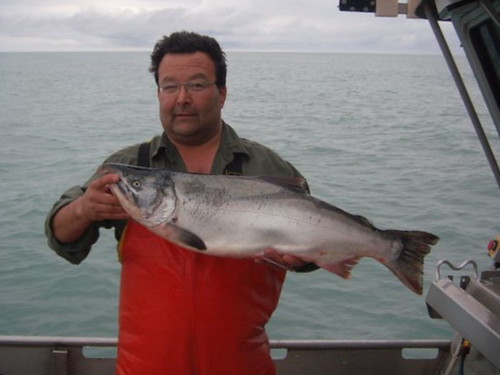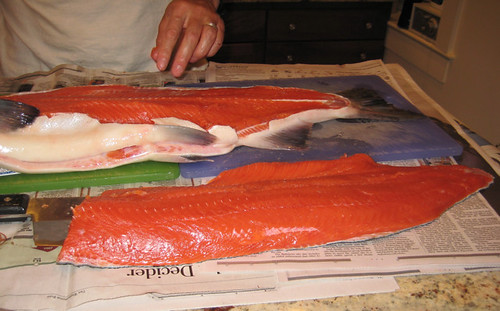
By Samuel Fromartz
If you've finished your holiday shopping and want to get your activist juices flowing, consider this for a minute: a crucial deadline is coming on Tuesday for comment on regulations for grazing organic livestock.
Grazing? Regulations? Before you click away, consider that organic dairy farmers have been fighting for at least 8 years to get a regulation in place that insures products like organic milk, remain organic. And that is important for a lot of people who drink organic milk -- the best-selling product in the organic market.
Here's the gist. We think of organic animals out on pasture, munching grass on an organic farm. But in the past, organic regulations required only that cows have "access to pasture" which was less than the words suggest. Some big operations flouted the rules, keeping their cows confined rather than out munching good, fresh grass. Access was a gate that was sometimes open, but mostly closed.
OK -- so after years of fighting, regulation writing, comment periods in which dairy farmers descended on Washington and asked for tougher regulations, the USDA's National Organic Program actually came up with one.
Parts of it are quite good, requiring at least 120 days on pasture and 30% nutrition from fresh grass. Farmers applauded. I called it a "big win for organic integrity" in a couple of media interviews.
I still view it that way -- but it needs some basic changes, ones which if they aren't made will actually have the effect of knocking the majority of organic livestock farmers out of the business.
How so?
Well, first off, the proposed regulation would require that cows be outside all year long. The common practice of putting them in a barn or a livestock pen in the winter when no grass is growing has been written off in favor of keeping them on land called "sacrificial pasture" during the non-grazing season.
That means that when the ground is frozen or covered in snow, the animals will be corralled onto a piece of pasture that is then sacrificed. The word is well chosen because the ground will be trodden, manure will accumulate and a good section of pasture will be lost probably for good due to soil compaction.
In rainy regions, like northern California or the Pacific Northwest, the situation may well be worse. Cows will be kept in muddy fields, causing manure runoff into streams, and potentially endangering the health and welfare of the animals.
"There's no recognition of regional or climate variations," Albert Straus, the owner of Straus Organic Dairy in Marin County, California, said. "If this goes through, there is a good chance we will no longer be organic."
He noted that keeping the animals out on pasture year-round contradicts state
environmental regulations meant to prevent manure run-off
during the winter rainy season.
In the northeast, the sentiment is much the same. "Very few farmers use something like sacrificial pasture during the non-grazing season because they just don't have the land base, or the right soil type," said Ed Maltby, executive director the Northeast Organic Dairy Farmers Alliance, who was a vocal proponent for a new pasture regulation.
Instead, in places like Vermont and Maine, many organic dairy farmers bring their animals into barns for the coldest winter months, or keep them in barn yards where manure can be removed and fresh hay bedding provided. Then, when the grass is growing again in the spring, the cows are put out in fields.
In short, while many proponents were overjoyed that the USDA finally acted on getting a new pasture regulation, "it was way too perscriptive," said Jim Riddle, a longtime trainer of organic certifiers who served as chairman on the National Organic Standards Board that recommended new pasture regulations.
"To require an animal to graze during the grazing season does not require the level of detail in this proposed rule," he said.
There are many other issues with the regulation, but I will mention just one more -- a requirement that does away with grain finishing of organic livestock. Now, although I'm a proponent of grass-fed beef, a requirement that limits does away with grain finishing of organic beef animals would quash the organic meat market. (It does so by requiring 30% nutritional intake from pasture during the finishing period as well.)
The result would be to block a lot of farmers from raising organic livestock and further shift the market to overseas producers in Australia and Uruguay who export organic meat to the U.S. market. (Yes, even with the growth and awareness of local foods).
Why do some U.S. organic farmers finish their animals on grain? Because they want to receive the premium they get with a "choice" USDA label, which requires the fat marbling that comes with grain finishing. They can avoid that if they raise grass fed animals and sell them direct to the public, but as much as I applaud that nascent movement, it is a minute portion of the market. Many Americans still want marbled beef, even if they are looking for the organic label.
"If the regulation stands, a lot of livestock farmers tell me they're going to get out of organic," said Dave Carter, another former NOSB chairman and executive director of the American Bison Association.
But it isn't just an economic issue. Riddle said that animals can be raised responsibly and organically and still be finished 120 days on grain. "An organic animal finished on grain is significantly different than a conventional animal finished on a CAFO," he said, because of organic requirements that ban antibiotics, hormones, and ensure environmental and humane animal treatment.
The National Organic Coalition came up with a compromise that allows grain finishing for 120 days but also requires the animals have access to pasture. At first glance, this imperfect compromise makes sense.
The main point -- the new regulation is a good one: it requires that animals graze. But it should be rewritten to be less prescriptive, so that farmers can actually meet its requirements and it achieves its broader goal; that is, getting animals out on grass but also protectng their health and the environment during the non-grazing season.
A number of organizations have the means for commenting to the USDA (with proposed language). Here are a few:
- Northeast Organic Dairy Farmers Alliance
- National Organic Coalition
- Organic Farming Reseach Foundation
- Organic Consumers Association
- Cornucopia Institute
But remember, comment is due Tuesday, so read this and act.
Image link: NODPA




